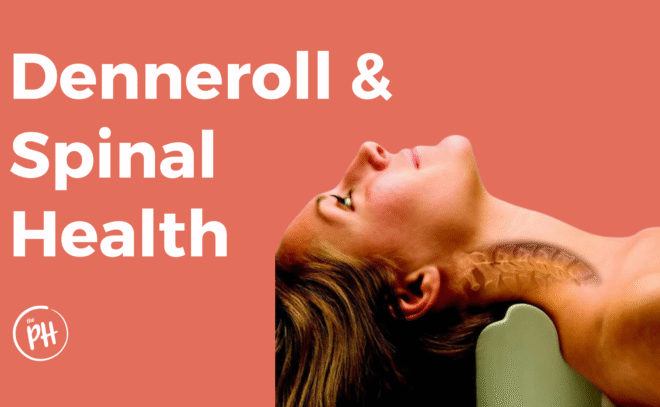How a Foam Block Changed Mark’s Life: A Story About the Denneroll and Spinal Health

Mark was a 42-year-old software engineer from Vancouver who spent most of his days hunched over a screen.
He worked long hours, often skipping breaks, and his posture slowly deteriorated over the years.
What started as occasional neck tension turned into daily headaches, a stiff lower back, and an annoying ache between his shoulder blades that wouldn’t go away—no matter how much stretching he did.
That all changed after a visit to The Powerhouse Chiropractic.
During his first appointment, Mark’s chiropractor explained something that finally clicked: his symptoms were likely due to loss of normal spinal curves. X-rays confirmed it.
His cervical (neck) curve had flattened, and his thoracic and lumbar spine weren’t far behind.
To correct this, his chiropractor prescribed a series of adjustments along with a Denneroll spinal traction device.
At first glance, the Denneroll just looked like a simple foam wedge. Mark was skeptical.
But his chiropractor explained that this small device was part of a powerful corrective strategy designed to remodel spinal curves using sustained, targeted traction.
So What Is the Denneroll?
The Denneroll is a spinal orthotic developed by chiropractors for spinal remodeling.
Unlike general foam rollers or yoga blocks, it’s precisely shaped to support very specific areas of the spine—the cervical, thoracic, or lumbar regions—depending on what needs correction.
At The Powerhouse, chiropractors use detailed posture assessments to determine exactly where and how the Denneroll should be used.
There are three main types:
-
Cervical Denneroll – Designed for the neck, this is most often prescribed to correct forward head posture or loss of the natural neck curve. Patients often lie on it for 10–20 minutes daily to help restore proper curvature and relieve neck tension and headaches.
-
Thoracic Denneroll – This version supports the mid-back and is incredibly useful for office workers with slouched posture or a hyperkyphotic (hunched) thoracic spine. It opens up the chest, improves breathing, and counteracts that rounded-shoulder look.
-
Lumbar Denneroll – For the lower back, this version helps rebuild the natural curve in the lumbar spine. It’s great for people with chronic low back pain, disc injuries, or a flat lower back posture.
What About the Posture Regainer and the ScoliRoll?
While the Denneroll focuses on restoring normal spinal curves in one region at a time, other tools may be prescribed as part of a more advanced spinal correction plan:
-
Posture Regainer – This is a larger, block-style device used to open up the thoracic spine and chest, especially in patients with severe upper-crossed posture or excessive kyphosis. Unlike the thoracic Denneroll, which supports one region, the Posture Regainer spans a broader area of the spine and shoulders to promote global posture correction. It’s often used in cases where breathing feels restricted or shoulder mobility is limited due to posture.
-
ScoliRoll – Specifically designed for people with scoliosis, the ScoliRoll provides asymmetric spinal traction. It’s custom-positioned based on X-ray analysis to encourage corrective movement in the scoliotic curves. This tool is especially valuable for adolescents or adults with mild to moderate scoliosis who want to reduce progression and improve spinal balance without bracing or surgery.
At The Powerhouse, your chiropractor will carefully determine which tools are right for your body and your goals.
These devices aren’t one-size-fits-all—they’re precision tools in a personalized spinal remodeling plan.
Mark’s Transformation
Mark began using the cervical Denneroll as prescribed—10 minutes every night, lying on it just below the base of his skull.
It wasn’t comfortable at first, but within two weeks, something shifted. His headaches decreased. His neck felt looser.
After a month, his posture visibly improved, and his co-workers even commented that he looked taller.
A few months later, his chiropractor added the lumbar Denneroll to his home care routine to support lower back curve correction.
Together with regular adjustments, Mark’s entire spine began to move more freely, and for the first time in years, he felt good in his body again.
Your Next Step
If you’ve been struggling with posture, tension, or nagging pain, the solution might be simpler—and smarter—than you think.
The team at The Powerhouse Chiropractic doesn’t guess when it comes to spinal correction.
With advanced imaging, tailored protocols, and tools like the Denneroll, they help patients like Mark correct the root cause—not just mask symptoms.
Ready to see what the right spinal traction can do for you? Ask your chiropractor if a Denneroll is part of your plan. It might just be the foam block that changes your life.